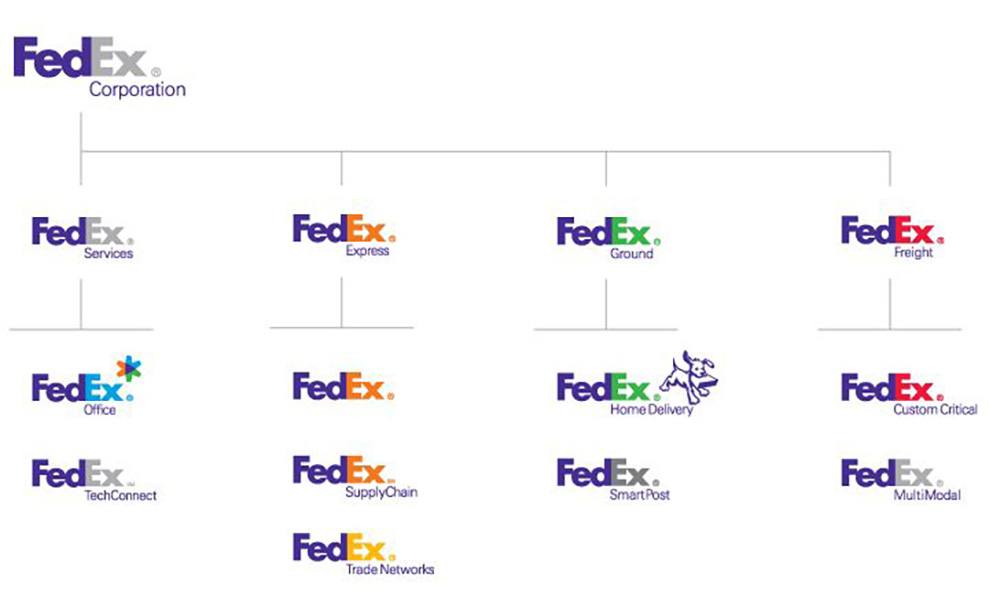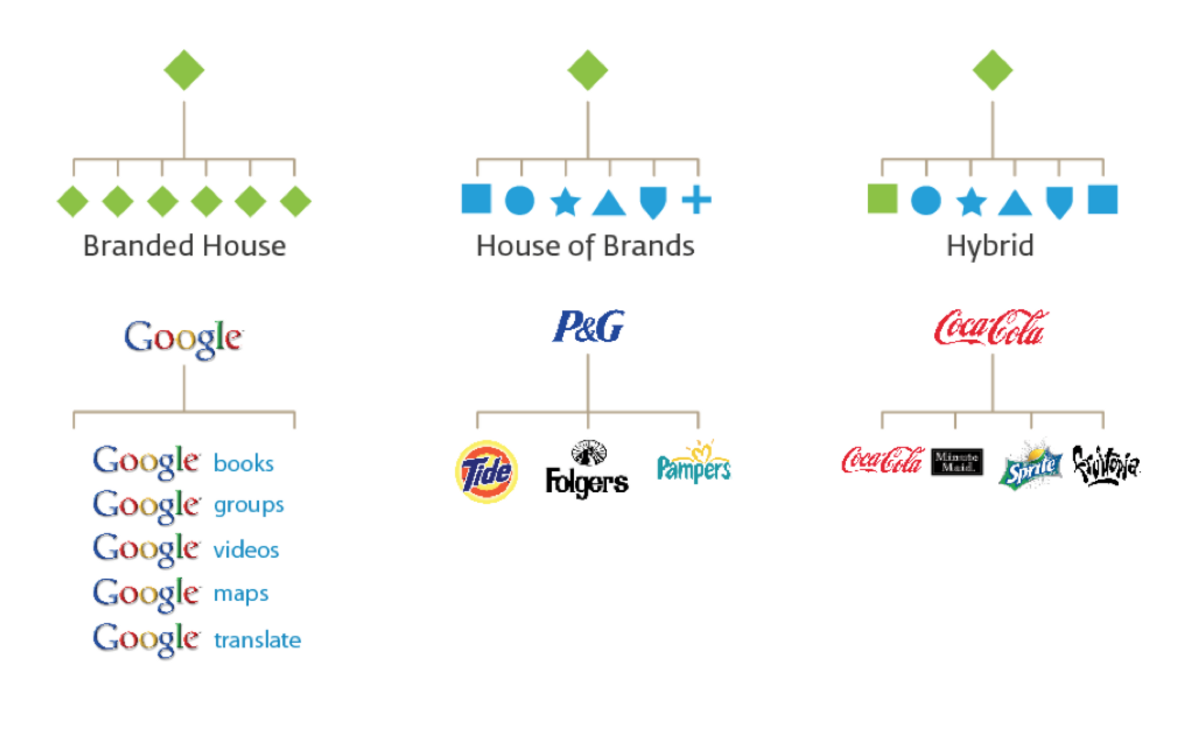Understanding brand architecture
Originally posted on frostcreative.co.uk
Brand architecture is a very complex subject to understand and in this post we will try and help you learn a little bit more about what it means.
Generally speaking there are very few single brand companies in the world. They will often start up with a single product or particular service and then, as they grow, more products and/or services are added to their overall offering or portfolio. You may have recently seen in the news that Facebook (corporate) rebranded as Meta. Mark Zuckerberg founded Facebook many years ago and back then it was a single social media app, but over the years the company has evolved and now has far more to offer than just Facebook. The company now owns WhatsAPP and Instagram and is embarking into various areas of new technology they are calling the metaverse; so the original founding name Facebook, for the overarching name of the company, doesn’t really work today. You can read up about the new name and reason for it here.
Brand architecture is not an organisational structure or a naming challenge though. Nor is it a product portfolio challenge like many believe it to be. Facebook rebranded due to the fact the name relates to a product brand and not the umbrella corporate brand, so it did need addressing. However, that is not brand architecture. Brand architecture is not an identity scheme either, such as the example below, which many people have assumed to be true:

So what is brand architecture if it is none of the above?
Brand architecture in essence is the design of the relationships between products, the brand purpose and its customers. It is the constant search for synergy across the board. Let’s use Facebook, or rather Meta as an example.
Meta, the corporate umbrella company that owns Facebook, WhatsApp and Instagram amongst its products, has a clear synergy with each of them. It’s pretty obvious to see with each app being commonly used to help its customers make social connections digitally, and we’re pretty certain that whatever comes out of Meta in the future will enable us as humans to make better social connections through the use of revolutionary technology. There’s a clear and consistent synergy and relationship that binds all their product brands together with Meta’s overall brand purpose.
The business goal of brand architecture should be to build the fewest number of the most powerful brands/products to serve the largest number of the right customers. We don’t need to explain what Meta are striving towards here. That said, if you are an entrepreneurial business and have a culture of inventing new products or services, then make sure they are all aligned and have synergy in the hearts of your customers. If you don’t, you’ll turn customers away because they will think you’ve lost your sense of direction. You may win in the short term financially with a quick spike in revenues but never in the long term and it will cost you a lot more to rectify the damage you could potentially cause.
The founding principles of architecture are pretty simple to follow; Strength, Functionality and Delight. This is also the effect of branding when done correctly. You can take these founding architectural principles and apply them to brand architecture as well. For example, your brand Strength is your Purpose, the Functionality is your Brand Products and the Delight is what your customers must feel.
So, just like everything else in branding, your primary concern is your customers and your brand architecture is for them.
Many of you will have seen the following diagram or similar when discussing brand architecture and types of brand houses:

A branded house is where there’s one master brand and each product derived from the master as per the Google example above and the earlier FedEx diagram. A house of brands is where the master brand which is often the group umbrella stands alone and each product is a brand in its own right, for example P&G above or Unilever. Then there’s the emergence of the Hybrid house model whereby the products and sub brands are directly connected within the same category but are a mix of standalone (house of brands) and connected brands (branded house). The hybrid model is actually the best model for growth. Whatever brand house you adopt though, all your products and or sub brands must all be connected through a common purpose and clear for customers to see. So, what brand house will you build for your customers?
The team at Frost are experts in brand strategy and architecture. We can help you deliver synergy across your product portfolio and identify future opportunities and potential challenges. Without a purpose your portfolio of products/services will have no sense of direction and will start to falter.
Feel free to call us on 01489 892 602 or email [email protected]
Southampton
T: +44 (0)1489 892 602
[sharify]
More articles you may like
Smarter Repurposing: How to Maximise One Shoot
One shoot. Five formats. Ten deliverables. And it all needs to be consistent, clear, and quick.
That’s the reality for today’s video producers. We’re not making one film anymore. We’re making 9:16 reels, square carousels, widescreen edits, teaser trailers, and silent subtitles, all from the same footage. The goal is to reach different audiences, on different platforms, with one aligned message.
How to write a blog that people want to read
While blogging started in more of a diary format for individuals, it gradually made its way into the commercial arena and is now used by businesses worldwide. Most blogs today are read by consumers or businesses looking for more information about a subject, product or service.
Celebrity Traitors: Inside story of the Trojan Horse
Working with Studio Lambert Scotland and Bizibot Productions – The Trojan Horse was constructed by the creative wizardry of Steel the Scene Ltd



